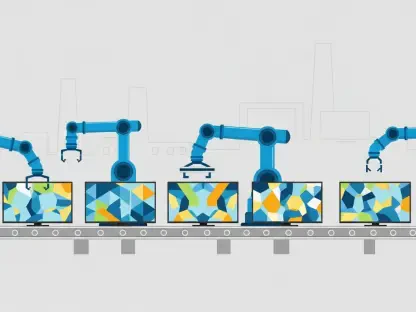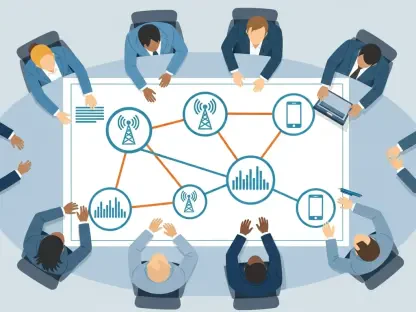Background
Access to the internet is no longer the luxury it was 30 years ago. A lack thereof can impact communication, healthcare, education, and job opportunities. Simply stated, Moore’s Law asserts that over time, technology will become more powerful, yet devices will become smaller. While that has certainly been the case in the evolution of personal devices, many are still on the outs; not because smart devices are unaffordable, but because the internet is.
The 2023 Internet Poverty Index (IPI) focused on internet affordability and unpacks the distribution of individuals who cannot afford a basic mobile internet package and are living in internet poverty.
Addressing this issue is of international importance, and features highly on the national agendas of hundreds of countries, and certainly is a global priority.
Defining Internet Poverty
The World Data Lab has set the parameters for defining internet poverty. This includes access to a minimum of 1 GB of data per month at a download speed of 10mbps, with the cost of access not exceeding 10% of the individual’s monthly expenses.
By this definition, over 1 billion people live in internet poverty, accounting for roughly 13% of the global population. Close to half reside in Africa, while Asia accounts for just over 400 million. Chad has the highest percentage of people living in internet poverty, with 86.3% meeting the defining criteria, while India has the highest number of affected individuals, sitting at more than 230 million people.
This carefully thought out criteria takes into account what the 1 GB of data can assist with and includes basic needs such as accessing emails, reading the news, or using government e-services.
Strategies to address Internet Poverty
According to the UK’s NCFE, there are three main contributing factors to digital poverty that enable the digital divide, and those are:
- Financial poverty, which causes digital poverty
- Access, which can be the result of geography (largely impacting rural areas)
- Skills, including lack of education and digital literacy
Cost and access
According to Ofcom data, the two groups least likely to have home internet access are lower-income households (11% without access) and the financially vulnerable (10% without access). Around 2 million households in the UK struggle to afford their internet bills. This despite being among the most developed nations and the 6th largest economy in the world.
People living in rural areas are disproportionately impacted. They may have to pay more for internet services, partially due to less competition for service providers, and often have to wait longer than those living in more urban areas for access to the latest speeds and technology.
Research indicates that too often the initiatives and measures that are implemented to address geographic digital inclusion are incoherent. This is why a recent report suggested the use of alternative technologies, such as wireless and satellite, to bring fast internet to areas that are the hardest to reach geographically.
Poor connectivity also occurs in economically disadvantaged metropolitan communities, where a strong overlap between digital poverty and financial poverty exists. The Government’s Levelling Up White Paper recently confirmed their revised broadband target for gigabit and mobile connectivity, tackling both rural and urban regions alike:
By 2030, the UK will have nationwide gigabit-capable broadband and 4G coverage, with 5G coverage for the majority of the population. “Levelling Up the United Kingdom” by the UK Government Footnotes in the White Paper clarified that the target means “at least 99% coverage”, addressing that there will be 0.3% of properties “that are too expensive to reach, even under the publicly-funded Project Gigabit program.” So, the question remains as to how we address digital inclusion for all.
Skills and Education
Over 9 million people lack basic foundation-level digital skills to navigate our digital world, according to research by the Lloyds Banking Group. With so many elements of our daily lives being managed online — such as Internet banking and staying in touch with family via video conferencing technology — having the confidence and skills to understand and efficiently use digital technology is arguably more important than ever before.
Lithuania and South Korea Concluding Thoughts
Lithuania and South Korea are renowned for their internet coverage, with 90% and 96% of households having access to high-speed internet. Their internet speeds are fast, the coverage is wide, and connections are affordable. In this way, they subvert all three parameters of internet poverty. Despite being on different sides of the world, they share similar routes to internet supremacy.
First, both countries aggressively invested in internet infrastructure. South Korea’s Information Infrastructure program (KII) began in the mid-90s. The program gave millions of dollars worth of government loans to urban and industrial areas and service providers to install copper and fiber optic networks across the country. In 2005, the government expanded this program to provide coverage in rural areas.
Lithuania invested similarly, with a particular focus on telecommunications starting in the 2000s.
This focus has helped it to stand out as one of the most digitally connected countries.
Second, both countries worked to make their populations tech-savvy. Lithuania’s Internet for All initiative and South Korea’s Internet Dream Village taught their citizens how to use the Internet and provided free public spaces for the same cause.
The latter program focused mainly on rural residents. Ensuring people are technologically literate is crucial to ensuring everyone benefits from network upgrades and unlocking all the advantages of the internet. For example, South Korea has become a massive hub of online gaming, an industry that made over $16 billion in the country in 2022.
Finally, both countries allowed the Internet to flourish without the influence of heavy government regulation. Thanks to government investments, numerous Internet Service Providers (ISPs) sprouted up, lowering the barrier to entry into the market.
This change did two things:
- Lowered prices — making connections affordable in both countries
- Encouraged innovation
For example, larger ISPs in South Korea switched to faster fiber-optic cables to fend off the competition they were receiving from smaller ISPs.
South Korea and Lithuania share similar paths to becoming internet leaders, and they provide examples of success stories that developing countries could take lessons from.
Concluding Thoughts
Internet poverty has emerged as a global issue and highlights the importance of affordable and widespread Internet access in today’s interconnected world. With more than 1 billion people affected by internet poverty, it’s clear that digital inclusion is crucial for social mobility, education, and overall well-being.
Countries like Lithuania and South Korea serve as success stories, demonstrating the effectiveness of aggressive investment in internet infrastructure and tech literacy programs and fostering a competitive, deregulated market. These lessons can provide valuable guidance for other nations seeking to bridge the digital divide and ensure that the benefits of the Internet are accessible to all.









